The Samsung Galaxy S6 and S6 edge Review
by Joshua Ho on April 17, 2015 9:00 AM EST- Posted in
- Smartphones
- Samsung
- Mobile
- Galaxy S6
- Galaxy S6 Edge
Display
As we briefly discussed in our look at the specifications, the Galaxy S6 line introduces a newer generation of AMOLED displays, which is said to increase maximum luminance to 600 nits. Samsung claims that this was achieved with the use of new materials, which is likely necessary in order to sustain power efficiency improvements. It doesn't seem that AMOLED is uniquely suited to high resolution, but rather that Samsung Display Corp. is managing to dramatically improve how they make AMOLED displays with every year that offset power consumption increases from higher resolution displays.
To find out how Samsung did, we use SpectraCal's CalMAN 5 Ultimate, in addition to X-Rite's i1Pro2 Basic to characterize displays as accurately as possible.
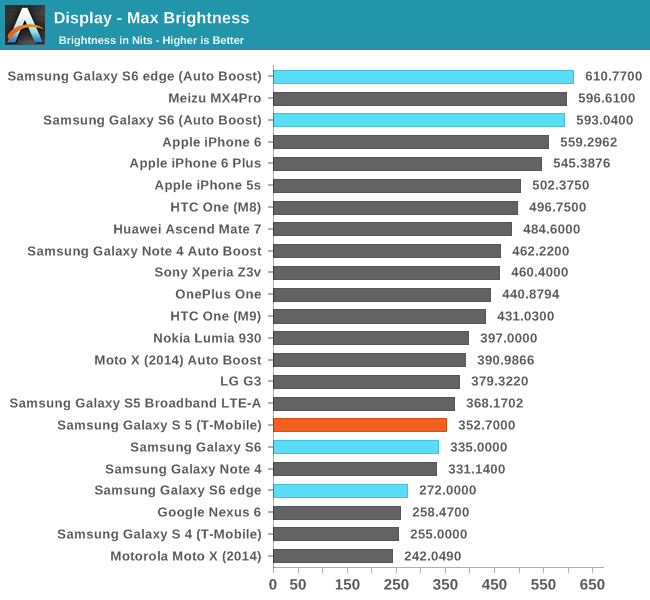
From the results Samsung's claims of a 600 nit display are valid in this case, which is a 100% APL white display. It's important to note that achieving this requires the use of auto-brightness, and that manual brightness is limited to a much lower brightness to reduce power usage, here the S6 sees similar maximum brightness as the S5. The S6 edge disappointingly only achieves 272 nits in this mode, a rather low value. I saw color balance shift dramatically in auto-boost mode, which suggests that this operating mode is likely less efficient than manual brightness. As an explanation, we've seen that colors are controlled in AMOLED by voltage while brightness is controlled by PWM (pulse width modulation). As with most recent AMOLED displays, there's no DC bias to the pixels so the contrast really is infinite instead of just a very large number when displaying black.
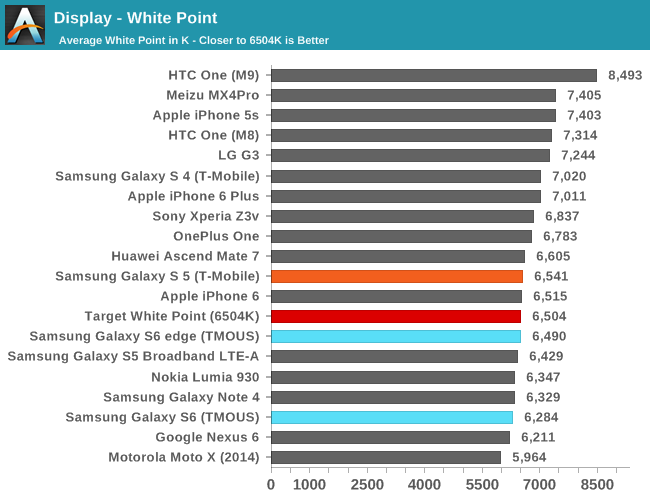

Moving on to grayscale, we can see that Samsung has done a pretty good job of controlling the white point and gamma across the saturation sweep, even if green is slightly dominant in both displays. We can also see that there is variation across displays as the S6 edge is closer to neutral while the S6 sample tends a bit warmer.
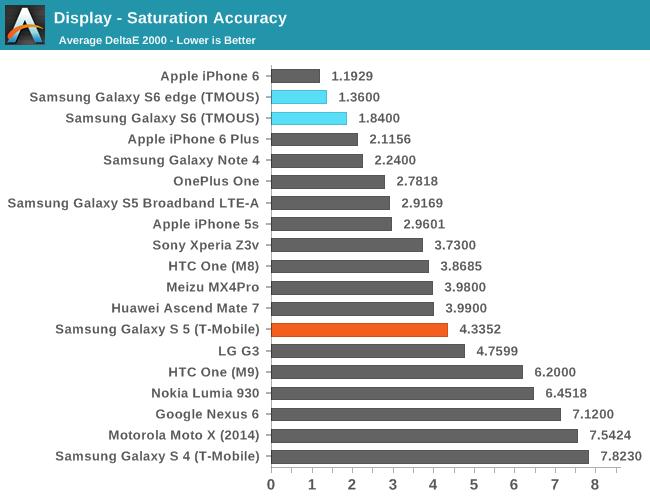
In the saturation sweep, both displays do an incredible job. I really don't have anything else to say here, because there's really no way to improve on the level of calibration Samsung has done on this display. Unless Samsung calibrates every single display in production, which is wildly impractical and effectively impossible to do, this is as good as it gets for a mass-produced device. Improving past this point will also be incredibly difficult to perceive, which means there's no real reason to go any further.
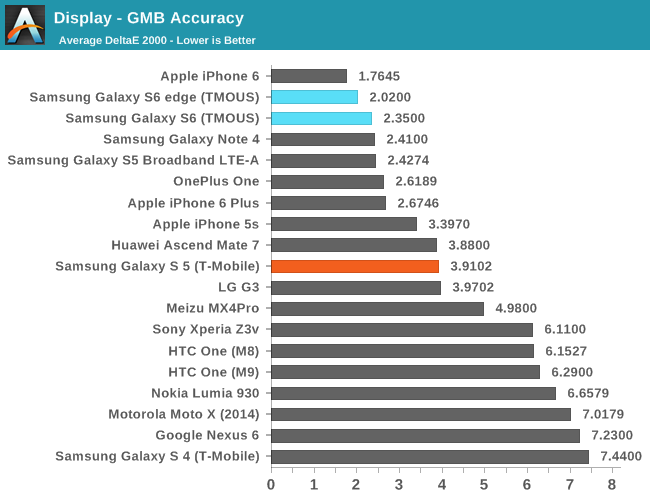
In the Gretag MacBeth ColorChecker, we can get an idea for overall color accuracy, which paints a picture similar to the saturation test. The only real problem I've noticed with these displays are the viewing angles, which can produce color shifting when the display is tilted. This is a bit of an issue on the edge variant as I can see that the edges of the display appear somewhat green when viewed head on, but otherwise there are no real issues to be seen here.
Overall, from a color standpoint it’s looking like Samsung has made one of the best displays available on the market today. Color accuracy is at the point where it’s pretty safe to say that the calibration doesn’t have clear color errors, and the peak brightness of the display is incredibly high. The 1440p resolution helps to compensate for the PenTile subpixel layout so in practice it’s effectively impossible to make out any pixels or the subpixel pattern. The contrast remains infinite as with most modern AMOLED displays, and overall it’s really hard to find any issue with the Galaxy S6’s display at first.
However while the S6 edge seems to be without any issues, the S6 does have some odd display issues that can be seen in direct sunlight as seen in the photo above. To be clear about this the photo above is a simple white screen, which should make the image completely homogeneous but instead there are two visible vertical lines and another jagged horizontal line that appear across the display. Inspection under a light microscope doesn’t really reveal what’s causing this, but the defect is quite visible in practice as seen in the photo above. I suspect that defects are rare, and in any condition other than direct sunlight I can’t see this visual problem.
While trying to see what this kind of defect looked like under a microscope, I also went ahead and took some photos of the subpixel pattern. As far as I can tell, it looks like the green subpixels have a bit more variance than what we’re used to as they tend towards oblong shapes rather than circles, which is likely due to the much tighter pixel density. It seems that this variance may cause some color shifting in certain units, which seems to remain a potential problem with Samsung's AMOLED displays. The pixel fill factor still remains surprisingly low when compared to LCDs, which usually have much higher active area. Due to the subpixel arrangement and some other differences in the display design, color shifting also remains higher than one would expect from LCD displays that are found in phones like the iPhone 6.
The final test that I managed to run on the Galaxy S6 is the brightness vs APL test, which shows the advantage of AMOLED’s emissive nature as it can dynamically increase brightness if the entire display isn’t showing a white screen. As a result, this means that in low APL scenarios like dark movie scenes and app themes it’s possible to see a maximum brightness closer to 700 nits or higher. However, in practice the display’s practical brightness is closer to 600 nits.
Overall, the display is still one of the best on the market, but I would be a bit concerned about fill factor for VR applications as that was a problem on the Note 4. Issues like purple smearing have been resolved, but there are still some problems with the display such as color shifting with changes to viewing angles and some variability in display quality from unit to unit. With this generation I suspect Samsung is either meeting or exceeding the best LCDs in quality, and with the next generation of AMOLED it’s likely that high end smartphones will have to migrate to AMOLED to remain competitive.



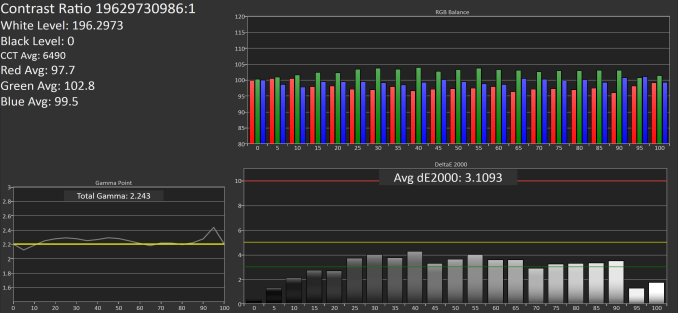
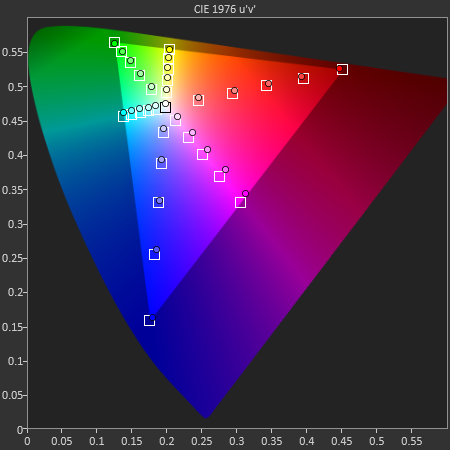
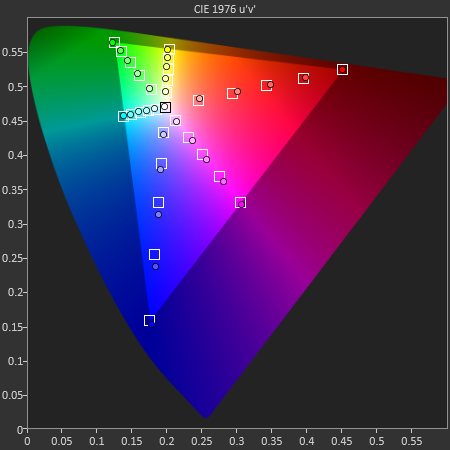
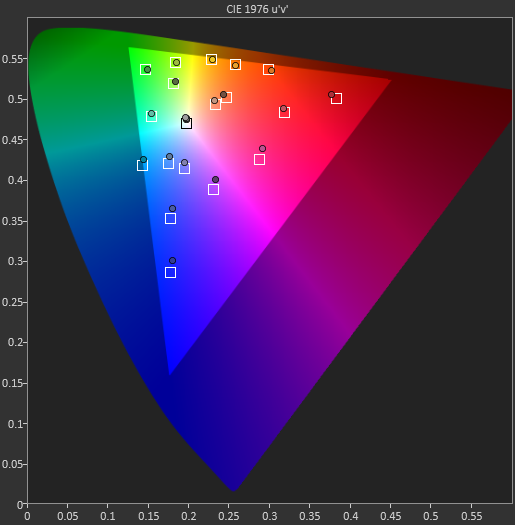

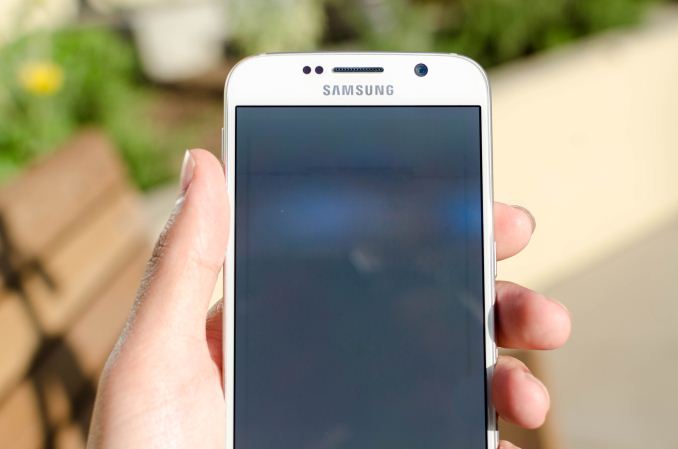
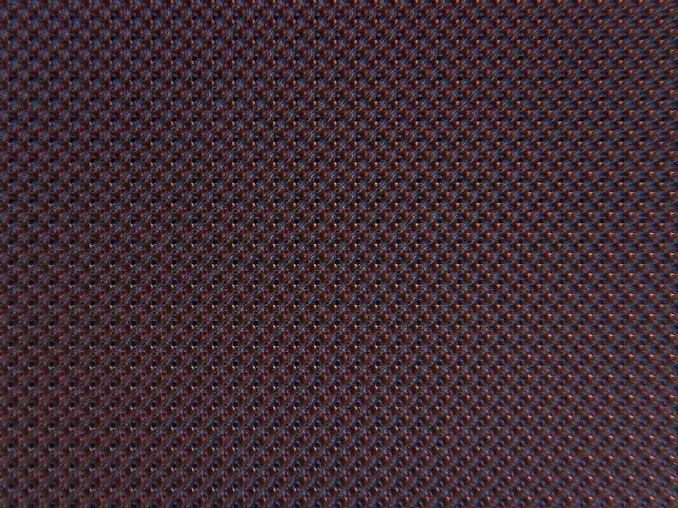
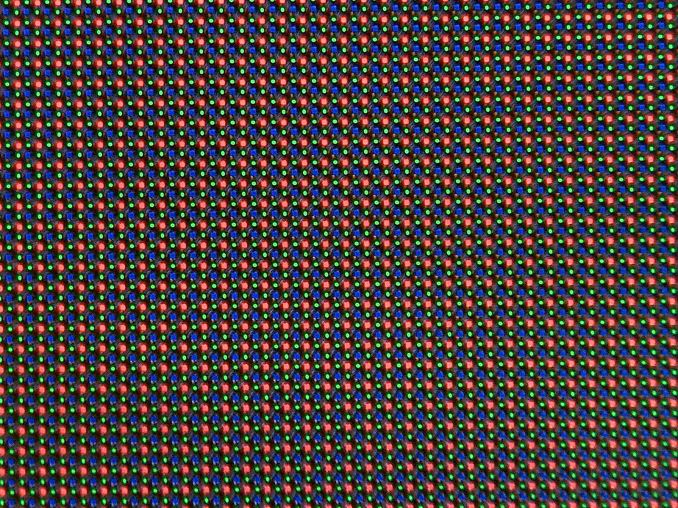
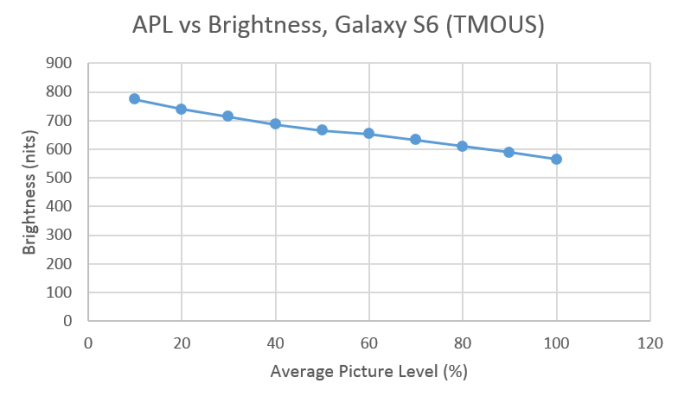








306 Comments
View All Comments
chizow - Saturday, April 18, 2015 - link
Yep exactly, I spend enough time tweaking my PC and at least it provides me proper tools to do so. After a few months with the S4 I just realized it wasn't worth it as the awful battery life and bloats OS made me want to just keep it in my pocket for fear of running out of juice when I actually needed it for phone functions.akdj - Sunday, April 26, 2015 - link
I'm ambidextrous. Use the 6+(personally) & Note 4 (family business of two decades). To be fair with your assessment the iPhone 5 sucked battery just as quick as the S4. At the time, comparable flagships for six months. 5S remedied it with iOS 7, but nothing like iOS 8 and the 6+'s battery size. It's physics and I'm with ya, not arguing. Just my two cents as my Note 4 with 5.0.1 is nearly identical to my 6+ with iOS 8.3 at the end of a 14-16 hour work and family day with similar usage shows similar reserves. Easily 50%. Usually high sixtiesThe memory leaks of yesterday and more granular control of apps and their background abilities on Amdroid (and the new core framework of 5.0), it's distribution of RAM (compression) and raw speed of the NAND makes the new generations of Android feel like iOS. Seriously. It's rare I run into less than 60fps manipulating the UI. And I use third party launcher Nova or Google. Samsung's stock browser is now not only capable but 'fast' and the displays have come a really REALLY LONG way since your S4. They're cool. Stop in and play with the hiDPI models like the S6 and Note 4. The latter of which hauls ass. And looking at these results, the S6 smokes it!
Across the board! And like us iOS dorks, Android's finally got a 128GB on board storage option. I'm as die hard SD card user as there is. I've got a Samsung Pro micro SD that just came out, & it screams! Awesome to pack with media and the like. But then again, I had two choices. White or black. 32 or 32GB. Even the fastest 64GB CF cards are over $200 to get to ½ the speed the S6's internals are reading and writing. And removable storage is prone to failure by user fault than non accessible OEM supplied 'system' optimized storage.
This latest batch of iOS and Android flagships have seen a significant increase in the internal read/write performance. Anyone that used or is using HDDs and have switched to an SSD knows the difference in perceived speed. It's the same on a phone when they've increased as much as they managed to in the past two years.
Especially this round. Note 4. The iPhone 6/6+. And now the king, look at those speeds on the S6. Those are insane and with the faster SoC, RAM (DDR4) and 'storage' I just talked about, along with the lollipop update and it's corresponding (massive) energy savings I've seen makes these 'phones' over the past ten months faster than computers we were using just five years ago. With higher resolution displays. Faster internet than even possible in most places then, wired! & we're getting those speeds on LTE! Wireless cell speed, increased horsepower, refined OS and leaps and bounds of improvements to AMOLED technology have made for a really tough decision which platform to go with. I'm still partial to iOS but only because of its integration and aggregation with OS X, my OS of choice. While I also use Win 8.1 and enjoy it ...neither system welcomes my browser of choice for nearly a decade. Chrome. Now 'Google Apps' it 'takes over' your computer. OS X or Windows, slow as molasses and it's a resource hog! Never thought I'd see the day IE and Safari would be my first choice(s).
Sorry to ramble. Just a view from someone not as responsible as yourself (I've no self control and can't decide between which, so both) and having continued ownership of both platforms since you switched, I'm floored by the improvements to Android, and their associated flagships. The displays are unbelievable when watching movies. Just awesome. Hard to explain how immersive a flick is on a 1440p 5.7" display with a killer set of cans ;)
Onsager - Friday, April 17, 2015 - link
Well written article, however given the few negatives, and very notable benchmarks, I am surprised it didn't receive a 'recommended' badge. The Exynos 7420 Soc itself deserves an award. In fact, numerous statements in the article certainly distinguish this phone as the current class of the field. 'What's a phone gotta do...'halcyonmax - Friday, April 17, 2015 - link
couldn't agree more.gnx - Friday, April 17, 2015 - link
+1Peichen - Saturday, April 18, 2015 - link
Is it necessary? The conclusion already states this is the best Android phone out right now.Onsager - Saturday, April 18, 2015 - link
By that rationale, no awards are ever necessary.akdj - Sunday, April 26, 2015 - link
That's kinda what I concluded. Awards? Who GAS? Hey quite honestly says this is hands down the Android 'king of the hill' (my quote) several times. Camera. Check. Display check. SoC - Yep, Whole page devoted to it eating the rest of the field for lunch. The only silicon that competes with it right now is the A8, Apple's second generation 64bit bad ass.Kinda cool Sammy did what they did with Exynos when the SD810 heat/throttling came to light. Good for them but I think I must've read a different article than you. This isn't a site for trophies and ribbons. And you don't have to read between lines
He actually says this is the BEST Android on the market and perhaps best overall phone. There's areas iOS best Android and vice versa. It's tough to say ones better than the other with 'numbers' ratings or some sort of star system. Bette to say it with words as the author (Josh? I'm sorry bud. Too lazy to look;)) has dome. It's right above this section.
It's called
"Final Words"
Babios - Friday, April 17, 2015 - link
I just had a hands on with both phones for more that an hour. Nice performance but too expensive for android phones. I am disappointed from a 1000€ phone (no sd, single sim, single speaker) and I can not feel it as a premium for that price range.You can buy a cheaper android phone that can cover your needs 99% with the 1/3 of the “Edge” price. S6 can score 70000 in Antutu but mine with 40000 is super fast in every game - application I have used.
Apple became cheaper that Samsung thats the news !!!!
magreen - Friday, April 17, 2015 - link
"As a reminder, power scales quadratically with voltage, so a drop from 1287.50mV to 1056.25mV as seen in the worst bin 1.9GHz A57 frequency should for example result in a massive 48% drop in dynamic power."It's a 33% drop in dynamic power, isnt' it?
(1287.5^2 - 1056.25^2) / 1287.5^2 = 0.327.
(The 48% number would be how much more power the higher voltage part uses than the lower voltage part, which is not the power drop.)